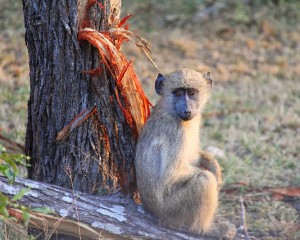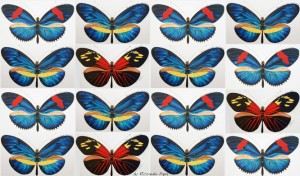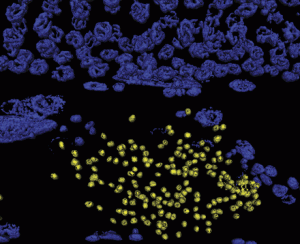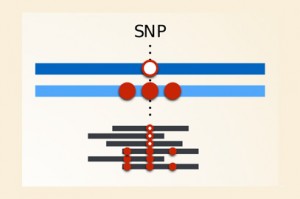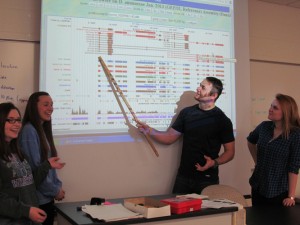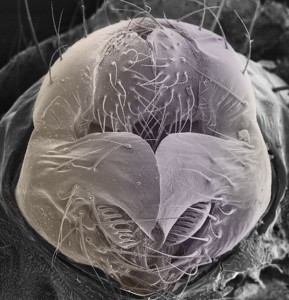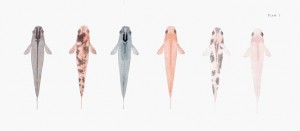Enter your address to receive notifications about new posts to your email.
Science & Publishing
-
Science & Publishing
June GENETICS Highlights
The June issue of GENETICS is out now! Check out the Highlights below or the full Table of Contents here. ISSUE HIGHLIGHTS Cortical folding of the primate brain: an interdisciplinary examination of the genetic architecture, modularity, and evolvability of a significant neurological trait in pedigreed baboons (Genus Papio), pp. 651–665 Elizabeth G. Atkinson, Jeffrey Rogers,…
-
Science & Publishing
The molecules behind mimicry
The vibrant passion-vine butterfly species Heliconius erato doesn’t taste as good as it looks. The flesh of this South and Central American species accumulates toxic compounds to discourage would-be predators, who quickly learn to associate the butterflies’ unpleasant taste with their bold red warning colors and patterns. But H. erato isn’t the only species that…
-
Science & Publishing
New in G3: Mosquitoes, cotton, & CYCLoPs
Check out the June issue of G3! MEETING REPORT Meeting Report on Experimental Approaches to Evolution and Ecology Using Yeast and Other Model Systems Audrey P. Gasch and Gaël Yvert G3 June 2015 5:1021-1023; Early Online April 22, 2015, doi:10.1534/g3.115.018614 Full Text | Full Text (PDF) INVESTIGATIONS Analysis of RNA Interference Lines Identifies New Functions…
-
Science & Publishing
Cover contest: Immune Repertoires
In 2014, the GSA journals launched a contest inviting image submissions related to genetics and genomics. The winning entry was created by Jian Han, of the HudsonAlpha Institute for Biotechnology, and appears on the cover of the May 2015 issue of G3. We talked with Dr. Han about the striking image: What does the image…
-
Science & Publishing
The trouble with HLA diversity
The most diverse of all human genes encode a set of proteins at the frontline of our immune system. Many different Human Leukocyte Antigen (HLA) proteins are encoded by genes clumped together in one portion of the human genome known as the major histocompatibility complex region. HLA proteins sit on the surface of cells and…
-
Science & Publishing
New in G3: C. elegans quantitative genetics, mouse imprinting, and undergraduate genomics research
Check out the May issue of G3! Investigations A Novel Electronic Assessment Strategy to Support Applied Drosophila Genetics Training in University Courses Maggy Fostier, Sanjai Patel, Samantha Clarke, and Andreas Prokop G3 May 2015 5:689-698; Early Online February 25, 2015, doi:10.1534/g3.115.017509 Abstract | Full Text | Full Text (PDF) | Supporting Information Differential Regulation of…
-
Science & Publishing
Undergrads power genomics research
With 1014 authors, an article by Leung et al. in the May issue of G3 has the largest author list of any paper published in the journal. More than 900 of those authors were undergraduate students when they performed the research. Over several years, students at 63 higher education institutions across the US conducted an…
-
Science & Publishing
May GENETICS Highlights
The May issue of GENETICS is out now! Check out the highlights below or the full Table of Contents here. Efficient multiple-trait association and estimation of genetic correlation using the matrix-variate linear mixed model, pp. 59–68 Nicholas A. Furlotte and Eleazar Eskin Existing approaches to multiple-trait association mapping are computationally intractable for large sample sizes, limiting their…
-
Science & Publishing
Beth and Bryn on fly sex
Male Drosophila fruit flies perform an elaborate ritual when they court a female. The male first turns towards the female, follows her, taps her, vibrates his wings to produce a species-specific song, licks her genitalia, curves his abdomen toward her and, if all goes well, the pair finally copulate. These complex routines may help flies…
-
Science & Publishing
Medaka Genetic Toolbox: Old fish, new tricks
Since the 17th century, the tiny medaka fish that dart through rice paddies in Japan have been bred as living ornaments. Though in the wild they are a nondescript mud color, medaka occasionally turn up in flashier mutant varieties — orange-red, pearlescent white, black splotched — that were much prized by generations of fish fanciers.…
-
Science & Publishing
Forest forecasts
In 2009, after five years parching under the arid blue skies of Calcena in northeastern Spain, dozens of neat rows of maritime pine seedlings had grown unevenly. Some of the seedlings had died years ago, some were stunted but hanging on, while others grew tall and green. The trees were not in their native soil.…


